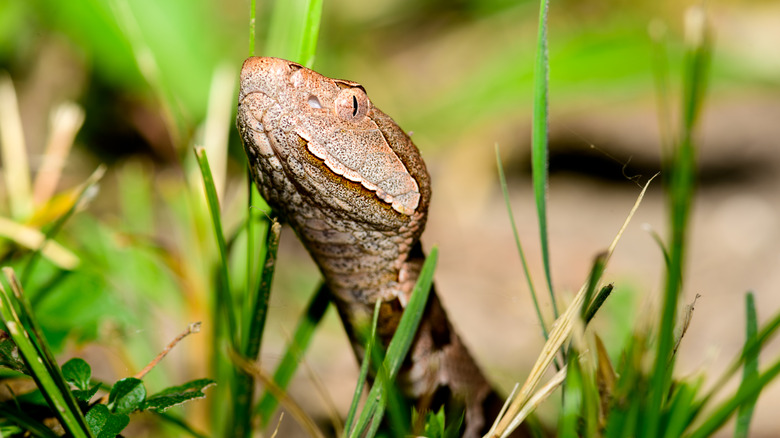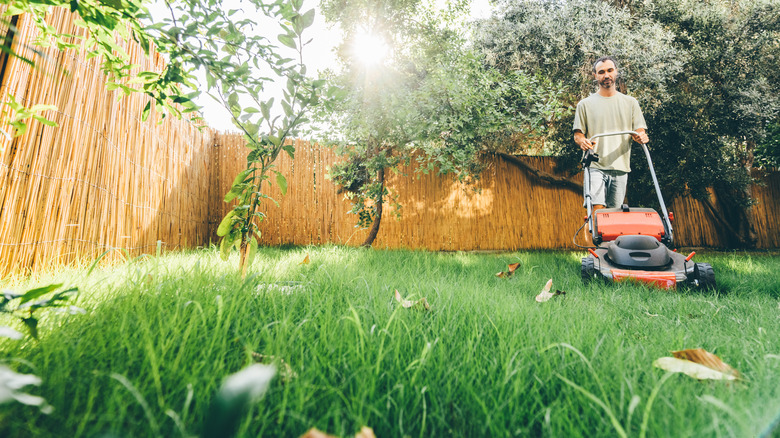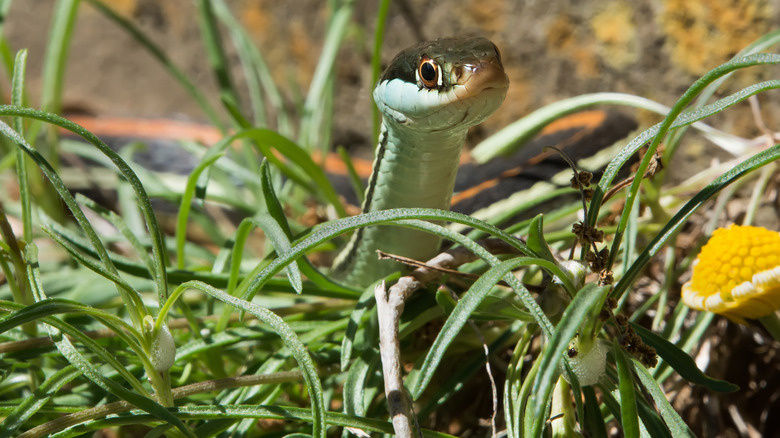High Heat Is Attracting Snakes To Texas Lawns. Here's What To Do About It
Mid-year temperatures can be brutal in Texas, with recent summers being among the hottest on record. Chances are, you're likely finding ways to try to find relief from the heat. If you're trying to grab some shade in your backyard from time to time, you might happen upon some unwelcome visitors on your lawn. Some snakes are reportedly trying to take respite from the Texas heat as well, which can make lush lawns all the more enticing for them. Before you panic, know there are ways you can help deter snakes from your lawn without resorting to measures that could potentially cause more harm than good.
There are numerous types of snakes in Texas. Common venomous versions include 10 types of rattlesnakes alone, as well as copperheads, coral snakes, and cottonmouths. Rat snakes, brown snakes, and king snakes are among the several types of non-venomous versions you can find in Texas, too. Being bitten by a venomous snake is a frightening prospect, but the reality is that snakes do not hunt down humans. They only bite if they are startled and feel threatened. With that said, scaring a snake may be unavoidable if you, a child, or a pet happens to stumble upon one on your lawn. Awareness is key this time of year, as snakes are more likely to try to escape the heat and find cool places to hide out. This includes tall grasses, bushes, and anywhere else they can find some shade.
How you can deter snakes from your yard in Texas
You certainly can't fault a snake for trying to stay cool in the hot Texas heat, nor can you entirely prevent them from slithering into your outdoor spaces. With that said, you can take steps to help deter snakes, including potentially dangerous venomous types. Take a look around your yard to see if you can minimize potential snake hiding places. These reptiles tend to favor tall grasses, underbrush, and fallen logs, as well as large shrubs and rock piles.
Keeping your lawn mowed down to an ideal height on a regular basis can help reduce the chances of snakes from hiding in your grass. Trimming hedges and bushes may do the same. Also, maintaining a clean yard can also decrease the number of places they can hang out, so you'll want to be sure you don't leave piles of wood, leaves, or toys around your yard for very long. Removing sources of food for the snakes can also help, so you'll want to avoid mistakes that are attracting mice to your home and garden as well as other types of rodents. Avoid leaving out items that might draw rodents, such as pet food, fallen fruit, open trash, and bird seed.
What to do if your Texas snake problem persists in your lawn
There are definitely certain snakes you never want to see in your yard. With that said, there's still a good chance you might come across a snake outdoors from time to time, even if you do maintain your yard. The best way to handle a snake is to allow it to retreat elsewhere. Never reach into a bush or pile of debris by hand, lest there may be a snake hiding. Use a shovel or other long tool to remove items and to check for snakes along the way.
If you happen upon a snake, slowly leave the situation and come back to the area at a later time. Never try to kill a snake, as this can pose even more danger to you and your family should the reptile happen to be venomous. Call for emergency medical help if you or someone is bitten by a snake. Finally, if your lawn seems to be overrun by snakes, consider hiring a pest control specialist for snakes in your yard to help get a handle on these reptiles.


